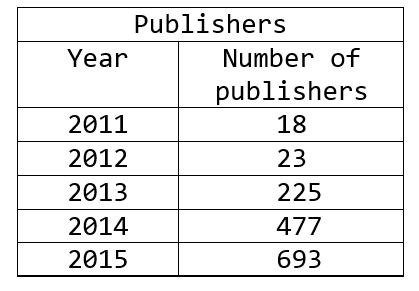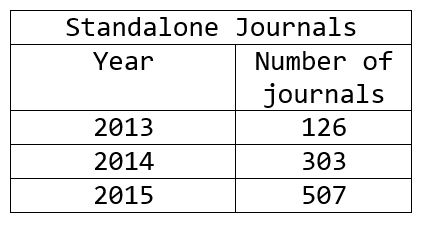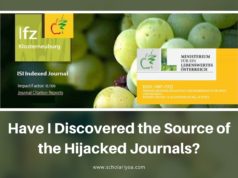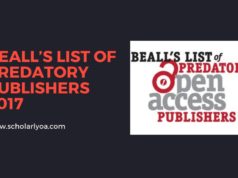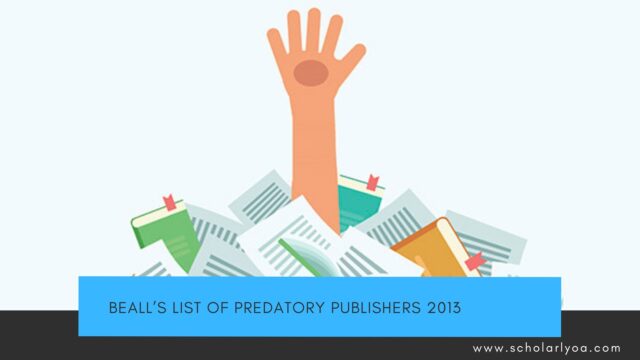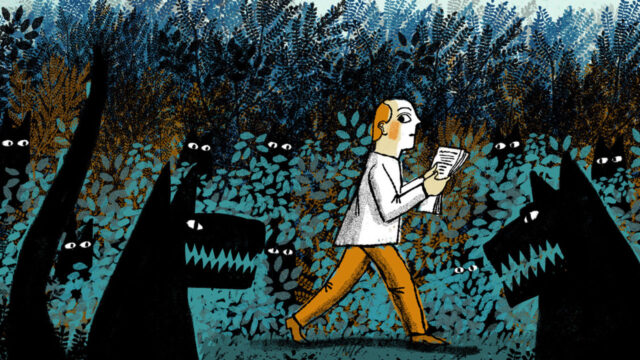
By Jeffrey Beall, January 2, 2015 Each year at this time I formally release my updated list of predatory publishers. Because the list is now very large, and because I now publish four, continuously-updated lists, this year’s release does not include the actual lists but instead includes statistical and explanatory data about the lists and links to them. Potential, possible, or probable predatory scholarly open-access publishers: This year, 2015, marks the fifth annual release of this list, which is also continuously updated. The list this year includes 693 publishers, an increase of 241 216 over 2014.
Potential, possible, or probable predatory scholarly open-access journals: This year, 2015, marks the third annual release of this list, which is also continuously updated. The list this year includes 507 journals, an increase of 204 over 2014.
Two New Lists: Misleading metrics and Hijacked journals This year, I started two new lists that track two new areas of questionable practices related to open-access journals. The Misleading metrics list includes companies that “calculate” and publish counterfeit impact factors (or some similar measure) to publishers, metrics the publishers then use in their websites and spam email to trick scholars into thinking their journals have legitimate impact factors. The Hijacked journals list includes journals for which someone has created a counterfeit website, stealing the journal’s identity and soliciting articles submissions using the author-pays model (gold open-access).
Misleading metrics: 26 (list debuted in March, 2014)
Hijacked journals: 30 (list started in May, 2014)
Here are links to current edition of each list:
Updated Criteria: With the help and advice of others, I have updated the criteria that I use when evaluating publishers and standalone journals for possible inclusion on my list. The criteria document is called Criteria Criteria for Determining Predatory Open-Access Publishers, 3rd edition. Most of the document remains unchanged. The only external documents the criteria now refers to are two published by the Committee on Publication Ethics (COPE). The document has also been reformatted for easier reading, and some new criteria have been added:
- There is little or no geographical diversity among the editorial board members, especially for journals that claim to be international in scope or coverage.
- The editorial board engages in gender bias (i.e., exclusion of any female members).
- The publisher does not allow search engines to crawl the published content, preventing the content from being indexed in academic indexes.
- The publisher copy-proofs (locks) their PDFs, thus making it harder to check for plagiarism.
- There is little or no geographic diversity among the authors of articles in one or more of the publisher’s journals, an indication the journal has become an easy outlet for authors from one country or region to get scholarly publications.

This criterion has been updated:
- In its spam email or on its website, the publisher falsely claims one or more of its journals have actual (Thomson-Reuters) impact factors, or advertises impact factors assigned by fake “impact factor” services, or it uses some made up measure (e.g. view factor), feigning/claiming an exaggerated international standing.
An Arabic translation of the criteria is available here.
Acknowledgement I am extremely grateful for all the help, support, suggestions, criticism, and advice I have received over the past year. I especially thank those who have forwarded information — such as spam emails — to me, emails providing information about new and questionable journals and publishers.

